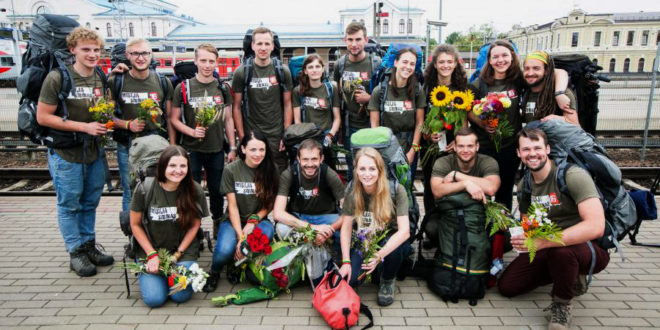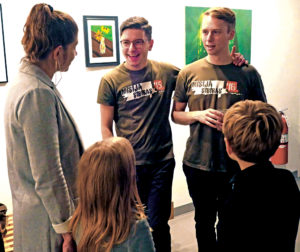
Part adventure, part history course and civics lesson, Mission Siberia (MS) is an annual two-week expedition by young Lithuanians to various locales in Siberia, where Lithuanians were once forcibly exiled by the Soviet government. MS has become one the most recognized youth-centered projects in Lithuania.
The initial purpose of the participants is to locate and identify Lithuanian cemeteries in the Siberian wilderness, clear them of brush, and restore or construct memorial crosses there. The organizers and volunteers thus honor the lives of fellow Lithuanians who suffered and died in extreme conditions of Siberia.
They also seek out survivors and living descendants of Lithuanian exiles who still live in Siberia. Their activities do not stop there, upon returning home, participants write up their experiences and then make oral presentations for schools and community groups throughout Lithuania.
Last fall, Lithuanian Americans had the opportunity to hear presentations about MS expeditions from Ignas Rusilas, the program’s executive director, and its assistant director Karolis Žemaitis. They spoke to Lithuanian Saturday school children and the general public in Chicago, New York, and Washington, DC. We caught up with them at the Lithuanian World Center in Lemont, IL.
How did Mission Siberia begin?
According to Rusilas, the idea germinated in 2005, when a national discussion developed about the seeming lack of civic pride among Lithuania’s youth. “When I was in the 8th grade I remember hearing adults complain: ‘What is our youth interested in? Just computer games and hanging out in the streets.’ I thought to myself then that that wasn’t true. We actually were very patriotic, but we just didn’t have any way of expressing it. Is there anything more boring for a youngster than to be hauled into an auditorium and to be forced to listen to his classmates recite patriotic poems on stage? I also recall that in the 9th grade, I had just completed a history midterm on the deportations. I did well, but leaving the classroom, I thought to myself – sure, I knew the material, but I did not “experience” it. It was as remote as if I had taken an exam on Ancient Rome.
The youth of my generation, born after Lithuania regained its independence, lacks its historical defining moment. We can’t appreciate freedom, because we never lived without it. Freedom to us is mundane, prosaic. But a trip to Siberia would make history real. We wanted to create an experience that would help define us, and answer the question “what does it mean to be Lithuanian?” This is why Mission Siberia was started in 2005.This project has proven that Lithuania’s youth is indeed patriotic.”
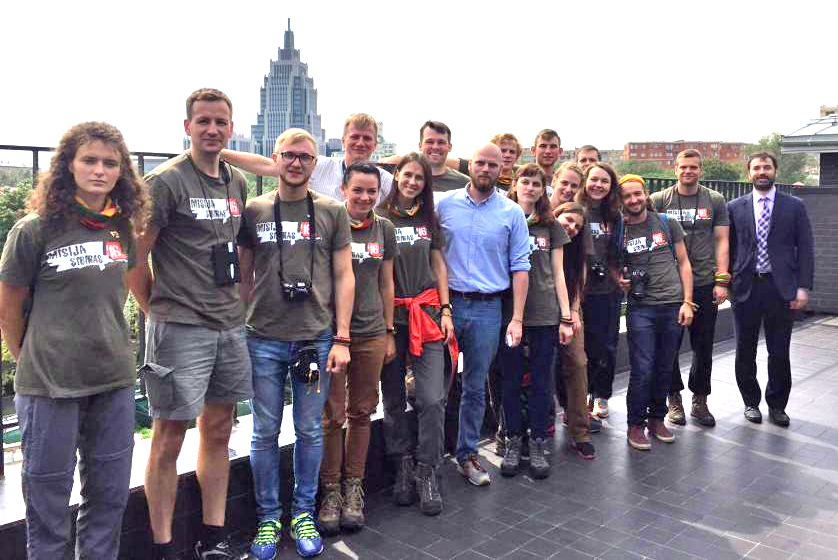
By the Numbers
The popularity of the MS project is borne out in numbers: In 11 years, 11,000 young people from the entire world (including Australia, Great Britain, Italy, and the US) have applied to participate in Mission Siberia. In 2016, 800 applied when only 16 were to be selected. Over the 11 years participants have traveled a total of 90,000 km or twice around the world to get to remote places in Siberia. Rusilas commented, “We often joke that this project is the most popular “university” in Lithuania. Every year participants speak of their Siberian experiences in hundreds of presentations to students. We have created nine documentary films that have been aired on National Lithuanian TV and can be viewed on Youtube. We have active media sites and some 26,000 Facebook followers.”
Being Selected
Being selected to a MS expedition is like winning the lottery. One’s chances are slim, but even participating in the application process is worthwhile, because it forces young people to contemplate what it means to be a Lithuanian. The process begins in March, when application forms are made available online. Applicants are required to answer a series of questions and write an essay.
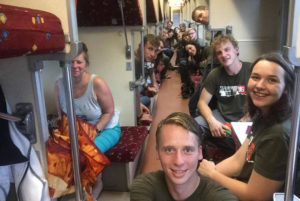
Rusilas explained that in the first stage “we look at the applicant’s motivation and select about 70 for the second stage—a 50 km hike. This year we traveled between two historic Lithuanian capitals: Trakai and Kernavė.” Although physical endurance and strength are important, they are not the most important selection criteria.
Organizers look for a positive attitude, a cheerful disposition, and the ability to get along with others. But motivation and dedication remain the most important attributes, because Mission Siberia is not just a two-week jaunt in the Siberian wilds. It is a year-long commitment. After two weeks in Siberia, which is physically and emotionally exhausting, participants are required to make presentations in schools, youth assemblies, and community centers.
Rusilas noted that last year’s participants had quite a bit of pre-expedition homework to do. “We learned how to craft Lithuanian crosses. UNESCO included Lithuanian cross-making in its “Intangible Cultural Heritage List.” It should be a matter of pride for Lithuanians to be acquainted with the traditional craft of cross-making, yet few of us even know how to use an ax or a saw. So, before setting out to Siberia, we took lessons in cross-making from Lithuanian masters. We also met with survivors, who have returned from exile in Siberia. We listened to their stories and experiences.
To Igarka
This year the Mission Siberia expedition set out to Igarka. Žemaitis explained why this site was chosen, “In 1948, as the free world was celebrating the end of World War II and the triumph of democracy over dictatorship, 5000 Lithuanians were deported to this wretched place above the Arctic Circle. For what? They were simple farmers, peasants, one-third of them were children. Imagine — children were enemies of the state!” Igarka has the largest Lithuanian cemetery in Siberia.
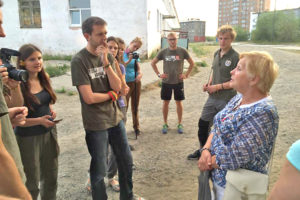
They traveled by train from Vilnius to Moscow and by plane from Moscow to Krasnoyarsk, which is close to Mongolia. From Krasnoyarsk they flew north to Igarka. Igarka is located about 150 km beyond the Arctic Circle.
Žemaitis noted that traveling to Igarka, which is 5500 km from Vilnius, was like traveling back in time. “We arrived to 90F heat. We were stunned. This year’s Mission Siberia participants were all born after Lithuania’s independence. Although our parents often spoke of how difficult it was to live in Soviet times, we never experienced it. Well, Igarka is frozen in Soviet time. It is a bizarre apocalyptic city like something from Mad Max. Located on the Yenisei River, which is part of one of the largest river systems in the world, Igarka was once a burgeoning city of 20,000 inhabitants. Now the population has dwindled to 3000, maybe 4000 at best. Huge housing complexes stand empty. There are no parks or grass. There is only dust. If you need an apartment — go to Igarka, you can have an entire staircase of apartments.”
Igarka was known for its lumber industry. It had the second largest sawmill in the entire Soviet Union. Freighters from Europe would sail north to the Arctic Sea and south to Igarka, load up with lumber and sail back. Igarka itself has no hardwood trees, only pines and birches. Logs would be floated up the Yenisei from Krasnoyarsk. Igarka was never a natural city. It was created in 1924 to make use of slave labor — first, Russian slaves, and later, deportees from various Soviet-occupied countries.
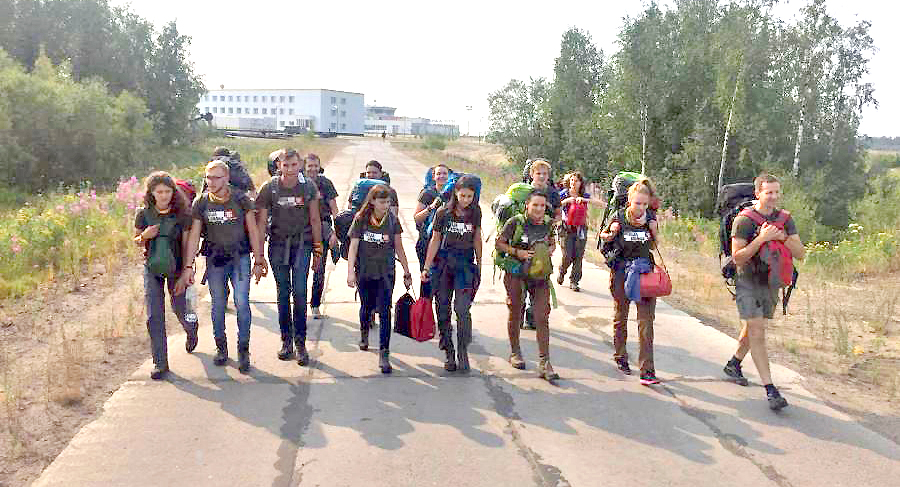
Karolis Žemaitis recounts his experiences on Mission Siberia 2016
On our first evening in Igarka, we took a tour around the city. It was deserted. You could hear some dogs barking, some children playing. Suddenly we hear a voice behind us: “Labas vakaras” (“good evening” in Lithuanian). We stop in our tracks. We were greeted by Olga, a woman born in Igarka to Lithuanian deportees. She now lives in Vilnius, but was visiting Igarka at the time. After that meeting, Igarka stopped being foreign to us, because we realized that the few remaining inhabitants were either related to Lithuanians or had Lithuanian friends. One quarter of its inhabitants were once Lithuanians.
For this reason Igarka has the largest Lithuanian cemetery in all of Siberia. Using the old maps we had at our disposal, we ventured out to search for it. When we reached the spot where it should have been, we found ourselves in a forest. Where are the crosses? To our surprise, the crosses were extremely tall, some nine to 12 feet high, and they were camouflaged by the trees. The cemetery was huge. I can’t express the feelings I felt as we walked around the forest cemetery. There appeared no end in sight.
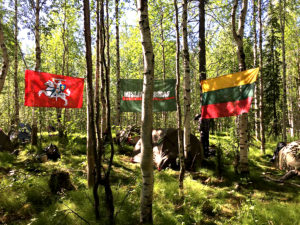
We also came in direct contact with examples of global warming. Some crosses that were once embedded in permafrost were now submerged in swamps. This was a tragic sight. We began to make out the names of Lithuanians — children, adults, the elderly. There were some 500 graves, dozens of crosses that needed restoration.
The crosses weren’t simple constructions of, say, two crossed logs, but they were finished to the smallest details. They all contained Lithuanian folk elements of suns. The graves were framed by wooden fences. The natives still remember how important the funeral processions and construction of crosses were to Lithuanians. When we considered that the wooden monuments were built by deportees, who suffered from Arctic weather conditions, starvation, 14-hour workdays of heavy labor, we felt it our duty to immediately clear the overgrowth of the cemetery. The work was very strenuous. Everyone worked. We are often asked that it was probably too difficult for the women in the group. Well, after this experience, I will never again think of women as the weaker sex. You should have seen with what resolve the women in our group worked. They refused to take breaks, they carried logs, they uprooted bushes. They overcame all obstacles.
In one part of the cemetery there was a sizable swamp. It was overgrown with vegetation, willows. Without any hesitation, we waded in and pulled up name plates and fences. Crosses were pulled out and tied to existing trees in order to delay their rotting. This needed to be done. And we did it.
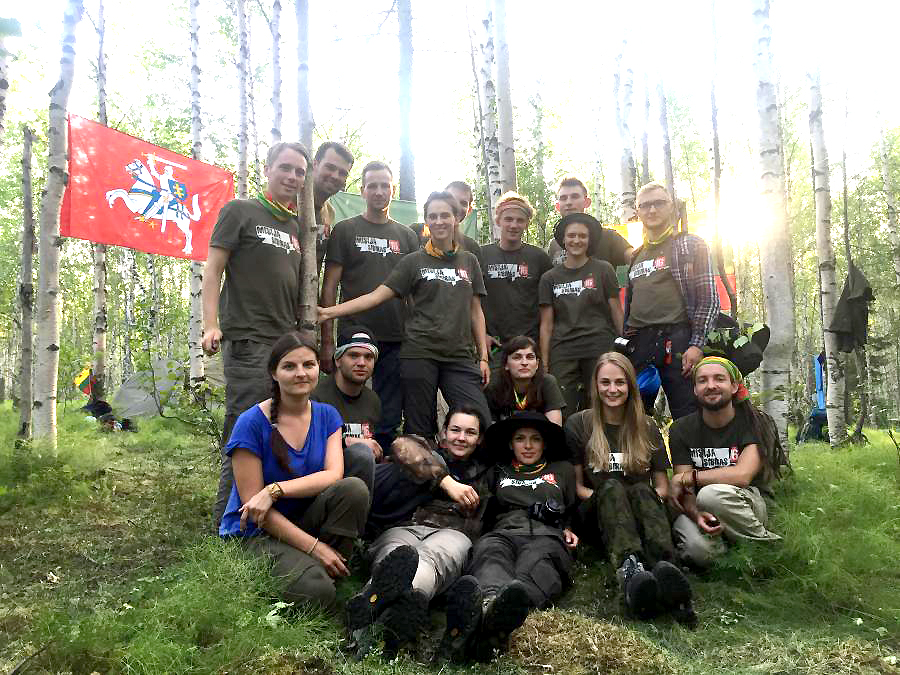
We set up camp adjacent to the cemetery. The locals thought we were nuts. They asked, “Why don’t you live comfortably in the city?” We answered that we need to be close to our work, so that no time is wasted by traveling.
Our campsite was marked by three flags: the Lithuanian tricolor, the MS flag and the State Flag of Lithuania with the White Knight. This became our home, our little Lithuania.
We are often asked, how did the locals react to us? In Siberia there is no Facebook or email; there is only direct contact with people. The locals were suspicious why would people from the West want to come to Igarka? Everyone, after all, was fleeing the place. It is not a vacation spot. We tell them we have come to clear our countrymen’s graves. They are at first surprised, and then the surprise turns into deep respect that we would travel half way around the world to remember our departed. Russians are warm hospitable people. Their respect turned to sincere assistance, and they were quick to lend us a helping hand.
It is paradoxical that in an area that had the second largest sawmill in the USSR, there were no trees whose wood was appropriate for making crosses. There were birches, but the wood was too soft. We wanted to make several crosses that would stand for at least 30 years, so we had to import the wood from the south.
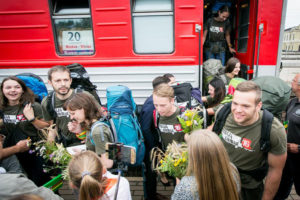
The wood had to travel some 1000 km just like before when logs were floated from Krasnoyarsk. Our wood was late in arriving. In Igarka, time has little meaning – distances are large, everything takes time, and consequently everything is late. We, however, did not have the luxury of living on Igarka time. We had only two weeks.
A ton of wood finally arrived by barge two days before our scheduled departure date. We had only 48 hours to construct nine new crosses. We resolved to construct as many as possible. It wasn’t just the construction – we also had to dig nine holes and erect the crosses. We worked day and night. Actually, because the sun does not set in Igarka, we just worked all day for two days.
It seemed impossible, but we erected nine crosses, as we set out to do.
As we left Igarka by bus, the Lithuanian women in our group began to sing. It was an especially poignant moment. Lithuanian songs returned to Igarka. But they were sung not by enslaved Lithuanians, but by free Lithuanians, who represented their own free country, who arrived here as an act of their own free will, to visit the graves of their own countrymen.
A final note: when you stand in the middle of Siberia, singing the Lithuanian National Anthem, holding the Lithuanian flag, surrounded by hundreds of Lithuanians (resting in their graves), you feel like you are capable of anything. You believe that your country is capable of anything. The emotion is so strong that you can’t contain it in yourself. This strength is a testimony to Lithuania that Lithuania’s youth is capable of creating Lithuania’s future: free, open, and democratic. This project is not only about wooden crosses. It is not only about how many graves we were able to clear. This project is rather about a deep commitment that unites us all and challenges us to act …
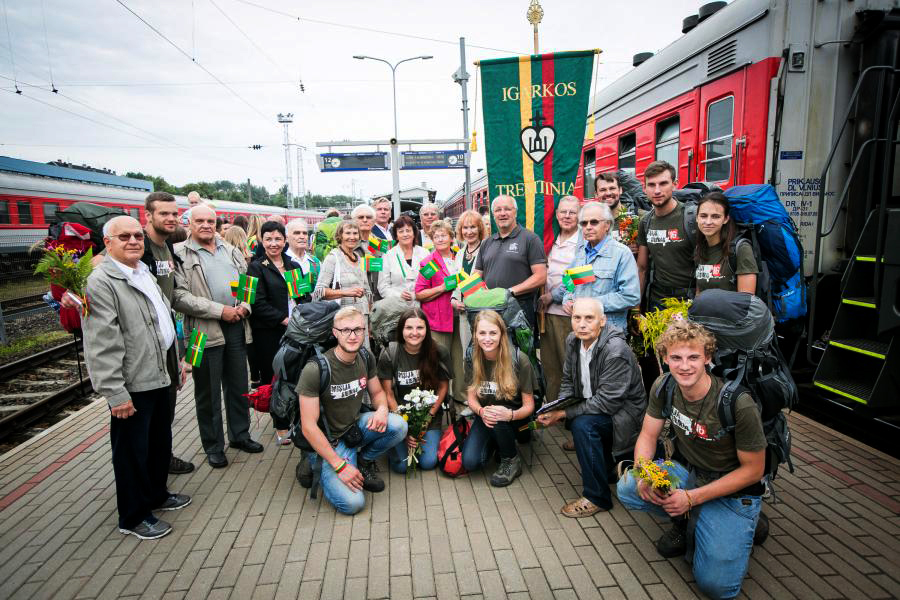
 DRAUGAS NEWS Lithuanian World Wide News in English
DRAUGAS NEWS Lithuanian World Wide News in English
